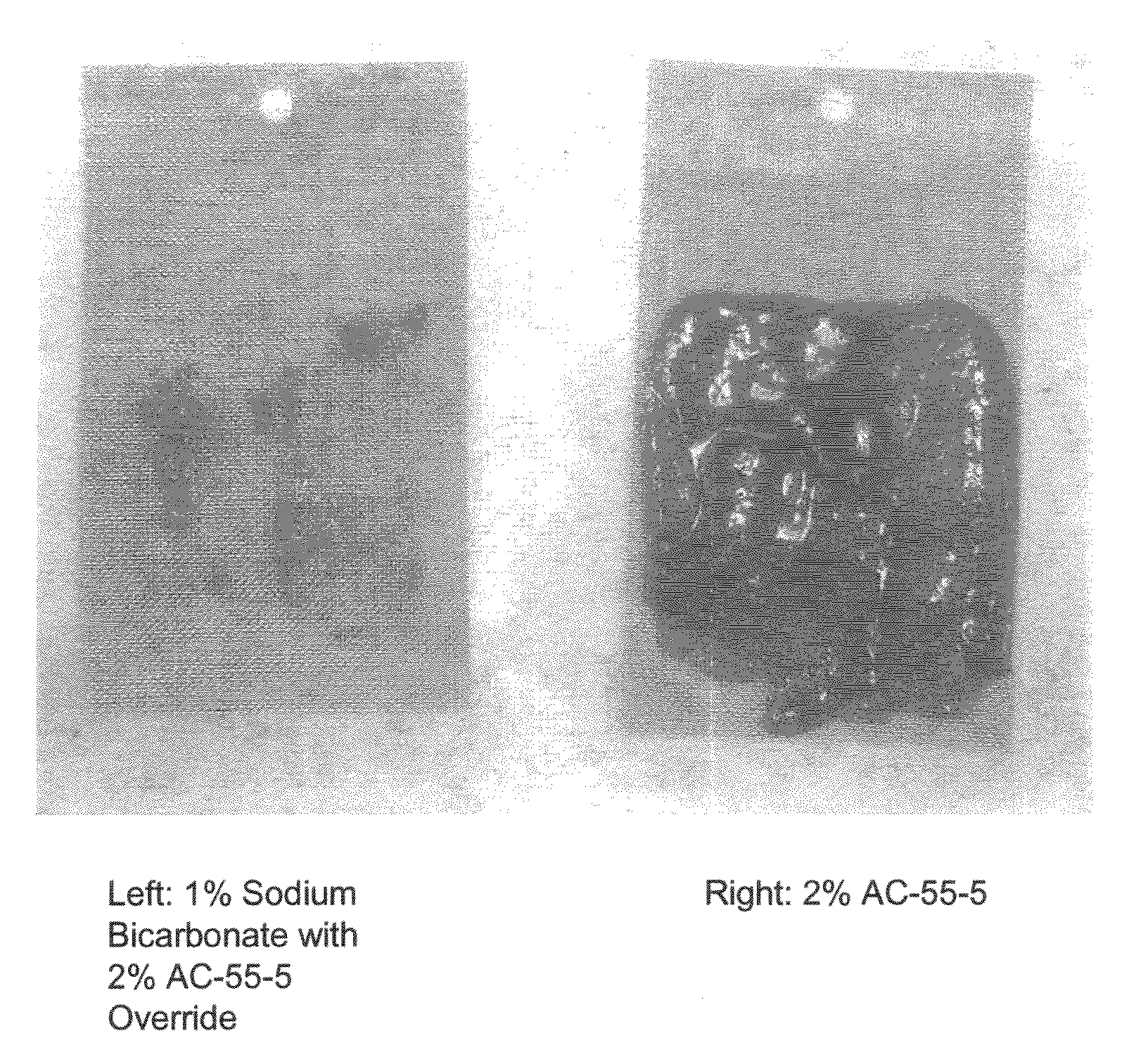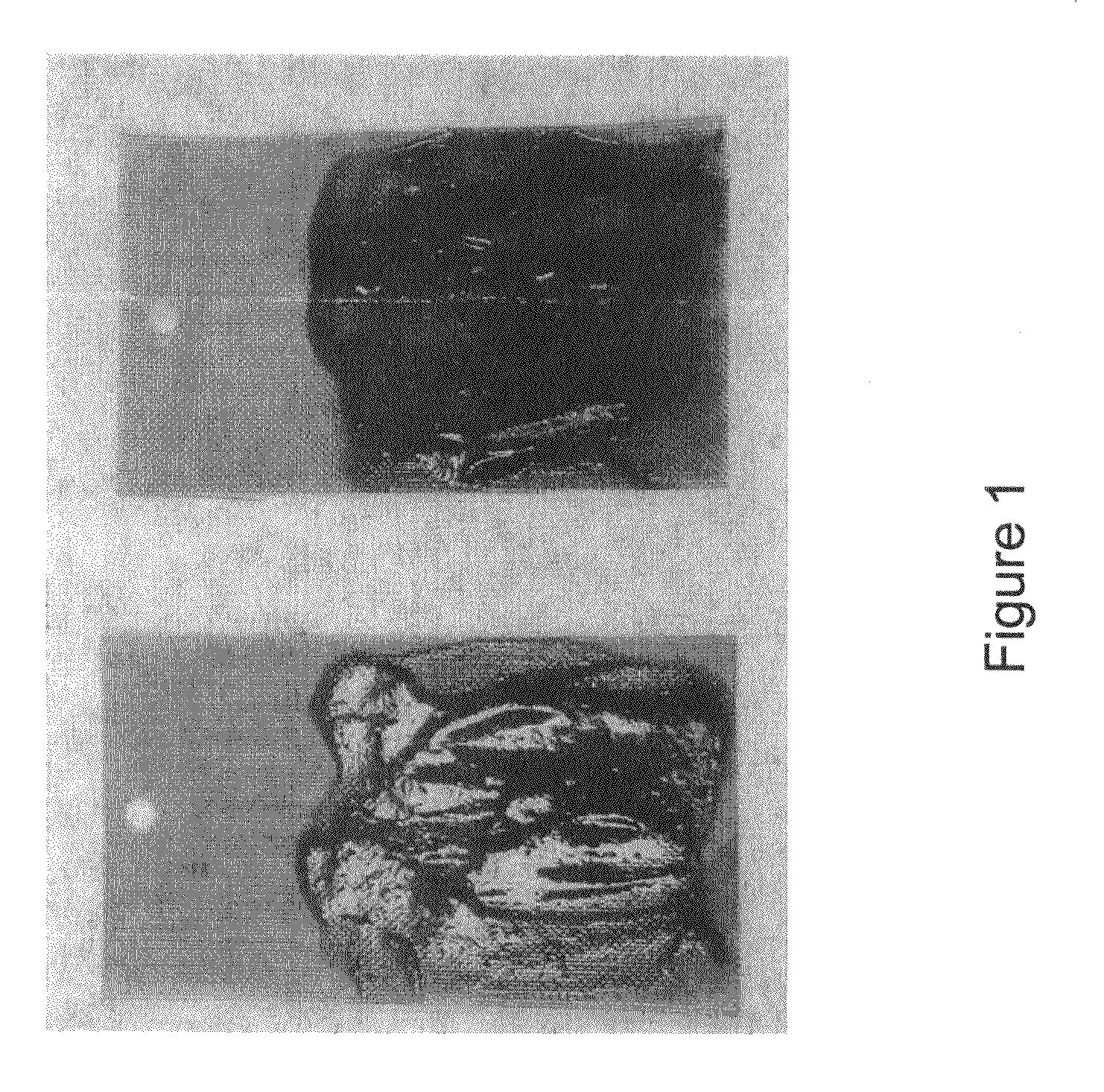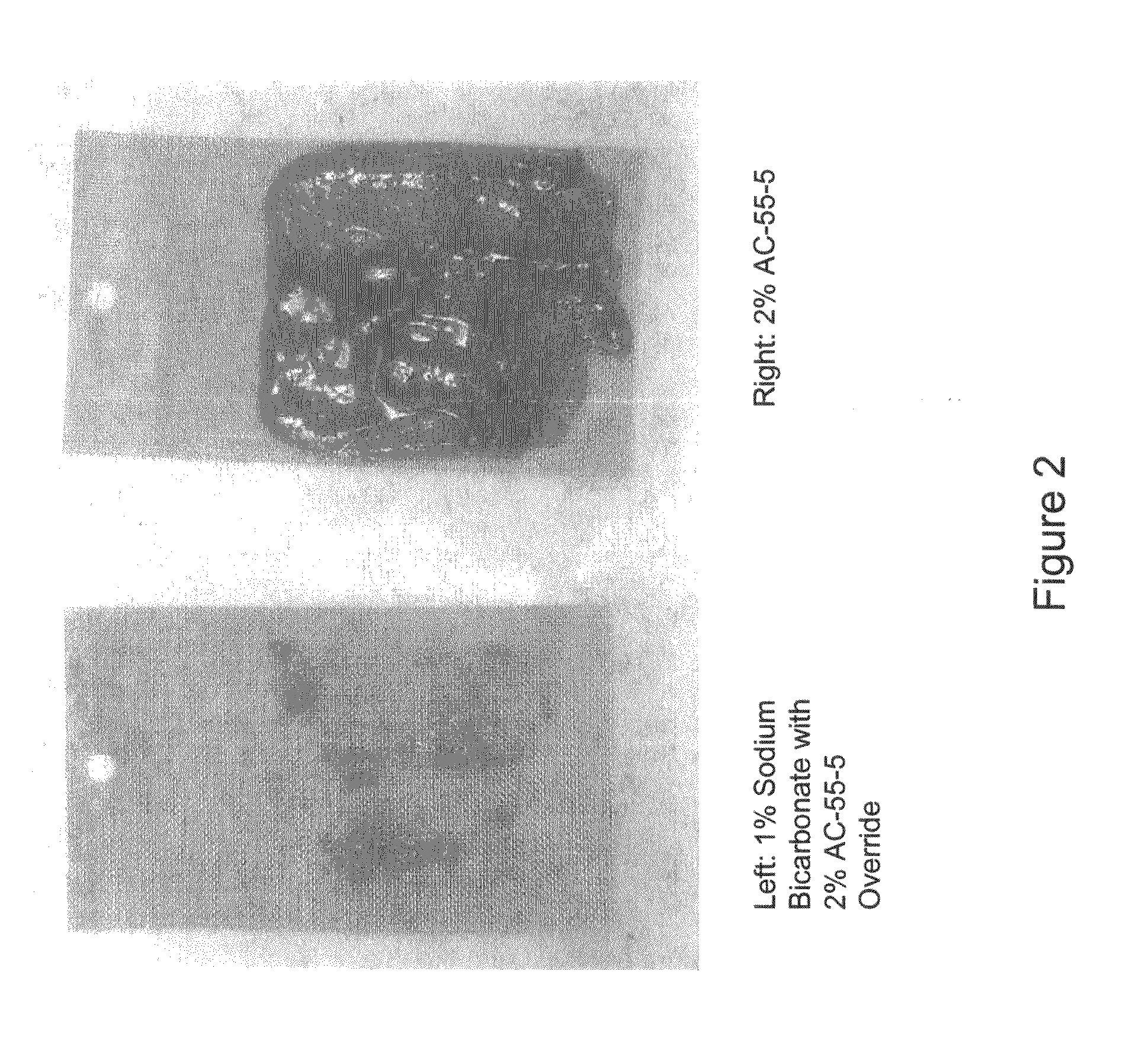Bubble enhanced cleaning method and chemistry
- Summary
- Abstract
- Description
- Claims
- Application Information
AI Technical Summary
Benefits of technology
Problems solved by technology
Method used
Image
Examples
example 1
Removal of Thermally Degraded, High Density Organic Soils
[0122]A thermally degraded, high density organic soil was prepared for use in the following examples. To prepare the soil, twenty grams of ketchup was spread onto one side of a stainless steel screen, and pushed through to make a thick coating on the back of the screen as well. The coated screens were dried at 60° C. for 20 minutes until the soil was tacky to the touch. FIG. 1 is a photograph of two soiled screens prior to any cleaning treatment.
[0123]a) Pre-Treatment Use Solution Containing a Single Gas Generating Solution
[0124]The following solutions were prepared in separate beakers at 160° F.: 1) 1% Sodium Bicarbonate; and 2) 2% AC-55-5. AC-55-5 is a commercially available acidic composition consisting of 59.5% water, 3.5% phosphoric acid, 37.0% and nitric acid. A stir bar was placed in each beaker and the solutions were stirred at 450 rpm.
[0125]A screen soiled with a thermally degraded, high density organic soil as descri...
example 2
Removal of Corn Ethanol Stillage
[0134]a) Removal of Corn Ethanol Stillage at 80° F.
[0135]Dried-on corn ethanol stillage screens were prepared. Screens were prepared by dipping clean screens in ethanol stillage and drying at 80° C. for 1 hour. FIG. 5 is a photograph showing the soiled screens prior to cleaning. The following solutions were prepared in separate beakers at 80° F.: 1) 1% Sodium Bicarbonate; and 2) 2% AC-55-5. A stir bar was placed in each beaker and the solutions were stirred at 450 rpm. A screen with dried on corn ethanol stillage was placed in each beaker. After 10 minutes, AC-55-5 was added to the beaker containing the sodium bicarbonate solution. Enough AC-55-5 was added to make a 2% solution. The AC-55-5 was added in 5 equal additions over the course of 5 minutes. The screen remained in the solution for 10 minutes after the initial addition of the AC-55-5 to the bicarbonate solution. The screen in the AC-55-5 solution remained in the beaker for 20 minutes.
[0136]FIG...
example 3
Removal of Brewery Trub
[0140]a) Removal of Brewery Trub Soil from a Stainless Steel Surface
[0141]Thirty milliliters of brewery trub was cooked down on a hot plate in stainless steel trays. FIG. 9 is a photograph showing the soiled stainless steel trays prior to cleaning. Tray A and tray B were placed in separate beakers with a stir bar stirring at a rate of 450 rpm. The tray labeled “A” was treated with the following cleaning chemistry: a pre-treatment solution consisting of sodium bicarbonate as the gas generating solution was applied to the tray for 15 min. An acidic override use solution was then applied to the tray. The override use solution consisted of 2% AC-55-5. The override use solution was applied for 15 minutes. Tray B was treated with 1.5% NaOH for 30 minutes. Both trays were treated with solutions at 60° F. As can be seen in FIG. 10A, Tray A showed improved cleaning over Tray B.
[0142]A second experiment was performed, applying the same cleaning chemistry described above...
PUM
 Login to View More
Login to View More Abstract
Description
Claims
Application Information
 Login to View More
Login to View More - R&D
- Intellectual Property
- Life Sciences
- Materials
- Tech Scout
- Unparalleled Data Quality
- Higher Quality Content
- 60% Fewer Hallucinations
Browse by: Latest US Patents, China's latest patents, Technical Efficacy Thesaurus, Application Domain, Technology Topic, Popular Technical Reports.
© 2025 PatSnap. All rights reserved.Legal|Privacy policy|Modern Slavery Act Transparency Statement|Sitemap|About US| Contact US: help@patsnap.com



